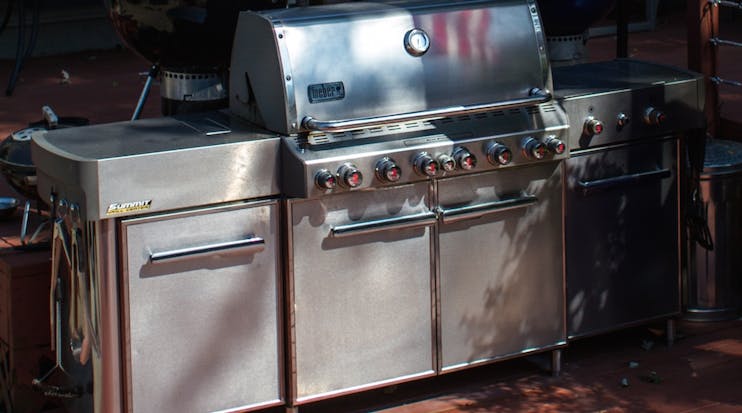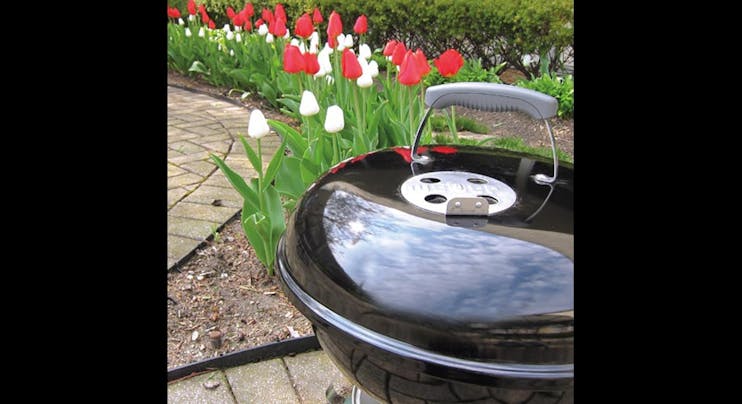Charcoal Fuel Types
Grilling with charcoal is a true test for any seasoned griller. From lighting and adjusting coals, to regulating airflow and controlling flare-ups, it can be an exciting challenge with some seriously great tasting rewards. But even before you ignite your charcoal to get grilling, there's one very important question to ask: What type of charcoal should I use?
Grillers are often asking me whether lump charcoal is a better fuel source than briquettes or whether briquettes are more efficient at maintaining even temperatures. There are so many variables, sometimes it's hard to know which type to choose. Therefore I've decided to set the record straight...
Lump Charcoal
Today, the process of making lump charcoal typically begins by stacking wood logs in underground pits and covering them with sheet metal and dirt. The logs are lit at one end of the pile and the wood smolders for a few days.
During this time, the oxygen-starved fire burns off water, sap and other volatile substances in the wood. What's left is almost pure carbon, also known as char or lump charcoal.
Grilling over a lump charcoal fire is a dynamic experience. Lump charcoal gets broiling hot pretty quickly, usually in 10 or 15 minutes. Its intense heat can sear food in seconds, browning the surface and scenting it with pure wood smoke aromas. In many cases the smokiness emanates from one kind of wood only, such as mesquite or oak.
Quite often though, a bag of lump charcoal will hold a mix of hardwoods, including oak, hickory, maple and possibly some tropical woods from South America or Asia.
The downside? Once a lump charcoal fire gets to its hottest point, it begins to lose heat rather quickly. In many cases the temperatures will fall from high heat to medium heat in less than 30 minutes.
So if you want to maintain a certain temperature range for cooking, the fire needs replenishing. Fortunately, lump charcoal lights and heats so quickly that you can get a burst of heat within 5–10 minutes of adding additional unlit coals.
Hardwood Charcoal and Weber Briquettes
For the sake of convenience, some charcoal briquette companies crush their charcoal with a binder, usually a natural starch, so the compact little pillows will hold their shape. Briquettes with no other additives are usually labeled "natural" or "hardwood." They burn almost as hot as lump charcoal, but they also burn out almost as quickly.
Their major benefit is their evenness of size and shape. With these briquettes, it is relatively easy to create a smooth bed of coals, whereas the irregular shapes and sizes of lump charcoal can leave "holes" in the fire.
Visually, lump charcoal does not have a uniform shape like a charcoal briquette. The pieces can be many different shapes and sizes which can lead to issues especially with holding temperatures for a longer period of time. Second, there is not a direct correlation between the amount of lump charcoal you use and how many charcoal briquettes you use in a recipe.
Most recipes have specific instructions using charcoal briquettes, so if you're using lump charcoal, you'll need to estimate the appropriate amount. Lucky for Weber users, our grills have dampers that give us complete temperature control, so this discrepancy is less of an issue.
In the end, choosing your charcoal fuel source is really a matter of preference. There is no right or wrong answer—the fuel source truly depends on you as a griller.
One tip I can offer up is that I like to use lump charcoal when grilling less than 1 hour, since most of the foods I will be grilling call for a medium to high direct heat. For anything over an hour I prefer using charcoal briquettes because they produce a longer and more even heat source, which I find better when grilling for extended periods of time.
Happy grilling, charcoal lovers!



